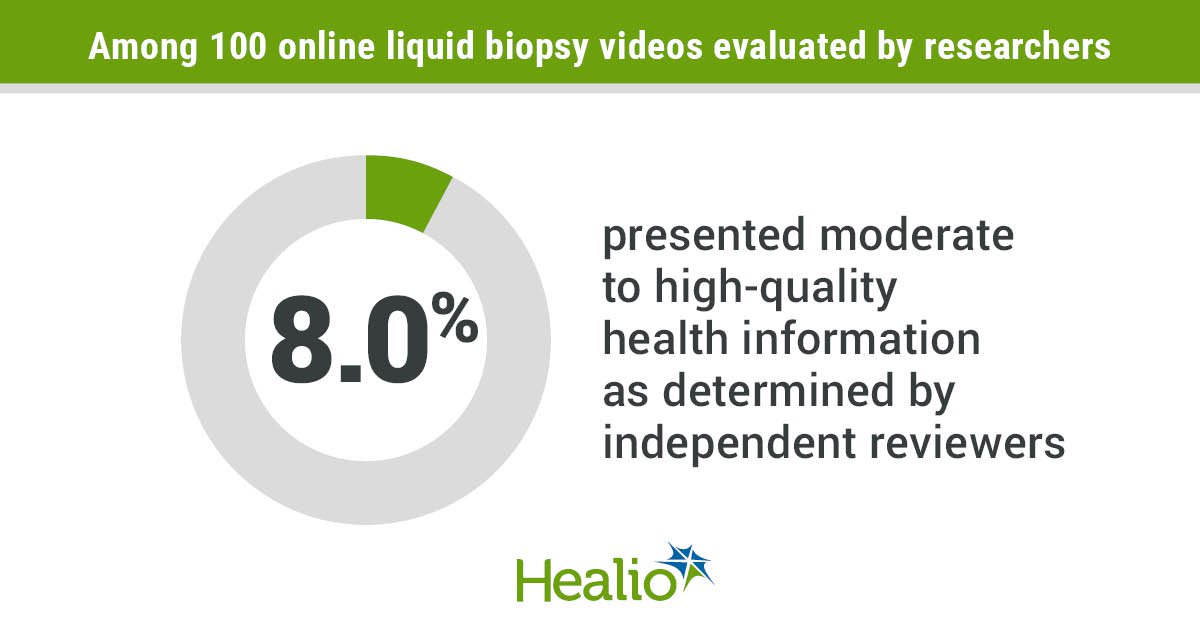Key takeaways:
- Most videos about liquid biopsy lack “high-quality health information,” according to independent reviewers.
- Most web pages about liquid biopsy are written at a college-educated level.
Online resources about liquid biopsies have several deficits that could prevent patients from learning about the tests and better understanding them, according to study findings published in JAMA Network Open.
Researchers found that videos often lack diversity, can be complex and have low-quality information whereas web pages have readability scores equivalent to college-level education.

Data derived from Litt HK, et al. JAMA Network Open. 2024;doi:10.1001/jamanetworkopen.2024.10171.
“Liquid biopsy videos and web pages had extensive shortcomings as sources of patient health information,” researchers wrote.
“Most patients need help understanding online content about liquid biopsies and may be more confused after searching online,” they added. “Health literacy plays an important role in patient experiences and outcomes. Patients with cancer often report knowledge gaps about their care and may be unable to clarify their concerns with clinicians, necessitating accessible resources to make informed decisions.”
Background and methodology
Liquid biopsies have become an invaluable resource for oncologists in detecting and identifying cancers as well as guiding treatments, according to background information provided by researchers.
“As more patients undergo liquid biopsies, it is essential that they can understand the benefits and limitations,” they wrote.
Because patients routinely get medical information online, Henry K. Litt, MD, an internal medicine resident at University of California, San Francisco, and colleagues wanted to investigate the quality, accessibility and clarity of liquid biopsy information.
Study investigators used Google and YouTube to conduct a cross-sectional analysis of 100 videos and 100 web pages. They excluded videos exceeding 5 minutes, scientific articles and non-English content.
Results and next steps
Men (65.6%) and white individuals (78.4%) made up most of the speakers on videos.
Researchers determined only 9% of evaluated videos to be understandable and just 8% had “high quality health information,” they wrote.
Web pages had issues as well.
Medical guidelines recommend web pages have reading levels at sixth grade or lower, researchers said, yet none of the 100 web pages analyzed met this threshold.
Instead, three different indices equated the readability scores to that of college-level education.
Only 20% of web pages had visual aids and just 5% featured multiple languages.
Many also had biases as 61% had commercial associations.
Additionally, only 42% of the web pages had author names, 29% had citations, 36% mentioned indications and 35% referred to limitations of liquid biopsies.
“With increasing propagation of medical misinformation online, efforts must be made to ensure that unbiased, high-quality information about novel diagnostic technologies and treatments is understandable and easily accessible to patients and caregivers,” researchers wrote.










